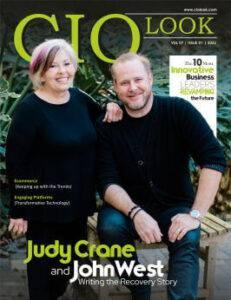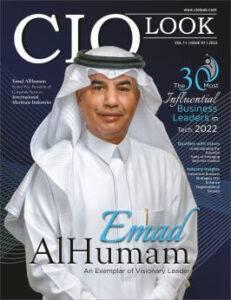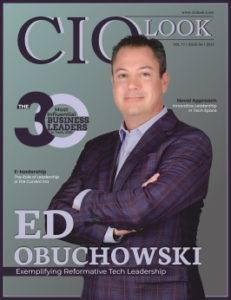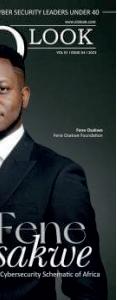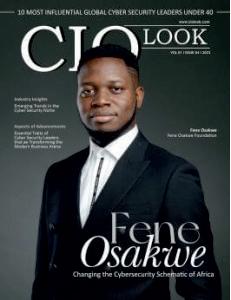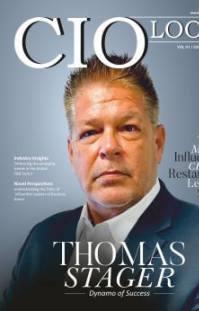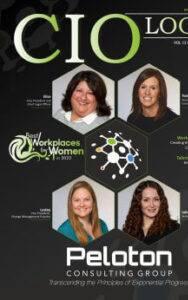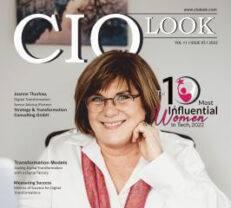












Educationismorethanthetransferofknowledge;itis the foundation for societal progress and individual growth.Visionaryeducatorslookbeyondtextbooks to nurture curiosity, empathy, and critical thinking. They inspire resilience, challenge conventions, and connect learning to real-world impact. By bridging privilege and opportunity,theypreparestudentsnotjustforcareersbutfor life. Their influence extends well beyond classrooms, shaping values and aspirations for future generations AmongthemisProf.RichardLarson,whoselifelongwork has transformed education, empowered learners, and advancedsocietalprogress.
CIOLookinitsrecenteditiontitledTechMeetsTeaching: Richard Larson’s Trailblazing Journey in EdTech spotlights the contributions of Prof. Richard Larson, an esteemed MIT scholar and pioneer in operations research. Overmorethanfivedecades,Larsonhasredefinededucation throughinnovation,mentorship,andpurposefulleadership, demonstrating that true educators are architects of empowered societies. Born in Queens, New York, and educated at MIT, he earned his Bachelor’s, Master’s, and PhD in Electrical Engineering before embarking on a distinguishedacademicjourneythatbridgeddisciplinesand connected theory with real-world problem-solving. Guided by a teaching philosophy rooted in engagement, empathy, and critical thinking, Larson transformed classrooms into
dynamic spaces where abstract concepts gained relevance through practical applications in fields such as healthcare logistics,urbanplanning,andpandemicresponse.
Beyond the classroom, Prof. Larson held leadership positions as President of INFORMS and co-director of MIT’s Operations Research Center. Among his most impactful contributions is MIT BLOSSOMS, a global initiative delivering free, high-quality STEM lessons to underserved communities Author of more than 175 publications,hisresearchhasshapednationalpolicyinareas such as vaccine distribution and STEM workforce development. For Larson, education is a “breathtaking ladder upwards,” bridging privilege and poverty. His true legacy rests not in accolades but in the generations of studentshementored,includingleadersandinnovatorswho reflecthisbeliefthateducationdrivesbothpersonalgrowth andsocietalprogress.
Haveagreatreadahead!



Editor-in-Chief
CONTENT
Deputy Editor Anish Miller
Managing Editor Prince Bolton
DESIGN
Visualizer Dave Bates
Art & Design Director Davis Mar�n
Associate Designer Jameson Carl
SALES
Senior Sales Manager Wilson T., Hunter D.
Customer Success Manager Collins J.
Sales Execu�ves Tim, Smith
TECHNICAL
Technical Head Peter Hayden
Technical Consultant Victor Collins
SME-SMO
Research Analyst Eric Smith
SEO Execu�ve Alen Spencer

FOLLOWUSON www facebook.com/ciolookmedia

www.twi�er.com/ciolookmedia
WE ARE ALSO AVAILABLE ON
CONTACTUSON
Email info@ciolook com For Subscrip�on www.ciolookmedia.com
Copyright © 2025 CIOLOOK Media, All rights reserved. The content and images used in this magazine should not be reproduced or transmi�ed in any form or by any means, electronic, mechanical, photocopying, recording or otherwise, without prior permission from CIOLOOK Media. Reprint rights remain solely with CIOLOOK Media.
sales@ciolookmedia.com
July,2025






“As an esteemed professor at MIT and a passionate advocate of operations research, Dr. Richard Larson has shaped how education is taught, delivered, and perceived over the last five decades.”

Education is not merely a path to a career—it is the
very foundation on which empowered societies are built.Acrossgenerations,thepowerofeducationhas transformed lives, bridged social divides, and illuminated futures.Yet behind every transformative educational system lies the vision of those who dedicate themselves wholly to nurturing minds and expanding human understanding. One such beacon in the world of education is Professor Richard Larson.
AsanesteemedprofessoratMITandapassionateadvocateof operations research, Dr Richard Larson has shaped how educationistaught,delivered,andperceivedoverthelastfive decades.Frompioneeringresearchtonurturingtheintellects ofcountlessstudents,hisjourneyisnotjustoneofacademic milestonesbutoneofhumanimpact.Hisstoryexemplifiesthe idea that true educators are not just teachers—they are architectsoffuturesocieties.
Inthefollowingexploration,wetraceDr Larson’slife—from hisearlyyearsinNewYorkandhisintellectualgrowthatMIT to his transformative work in education and global mentorship His insights into learning, research, and leadership not only enrich the past and present of education butalsoilluminateitsfuture.Letusdiscoverhowoneman’s dedication has inspired generations of learners, innovators, andthinkers.
Education:ALifelongGiftofEmpowerment
According to Dr. Richard Larson, education stands as the most powerful and enduring gift that society can offer to an individual. In his words, “It is a breathtaking ladder upwards—onceacquired,noonecantakeitawayfromyou.” Education, he believes, is a fundamental necessity that bridges the divide between privilege and poverty, empoweringpeopletolivehealthierandmorefulfilledlives. More than just degrees or grades, education fuels dreams, builds character, and empowers both personal growth and socialchange.
Larsonhasalwaysemphasizedthatthegoalofeducationmust go beyond textbooks. It must encourage critical thinking, empathy, and curiosity In his long tenure, he has seen educationchangelives,particularlywhenstudentsreceivethe rightmentorshipandguidance.Itisthispassionfornurturing potential that has shaped his five-decade-long academic journey.


“Dr. Richard Larson’s role as a professor was not just a job; it was his calling. Over his 55-year-long teaching career, he touched the lives of thousands of students.”
Born in Bayside, Queens, in 1943, Richard Larson spent his early childhood in Pennsylvania before settling in North Plainfield, New Jersey His formative years were characterizedbyanaturalcuriosityabouttheworldandalove forthesciences.AtNeedhamHighSchoolinMassachusetts, hedevelopedafondnessforphysics—aninterestthatwould sethimonthepathtoadistinguishedacademicfuture.
Despitehisnaturaltalent,Larsonrecallsbeingstunnedwhen he received an acceptance letter from the prestigious Massachusetts Institute of Technology (MIT). Like many others suffering from the "Groucho Marx Syndrome," he initially thought it was a mistake. But it was real—and so began a lifelong association with an institution that would definehiscareer.
MITYears:BridgingDisciplines,BreakingBarriers
Dr Larson completed his Bachelor’s, Master’s, and PhD in ElectricalEngineeringfromMIT.Buthewasneveronetobe confined by the rigid boundaries of academic disciplines. From the very start, he viewed his professional journey as a bridgeconnectingdiversesilosofknowledge.Hechosenotto becomeatraditionalphysicistbecausehedidnotwanttobe limited by narrow career tracks. Instead, he wanted to move fluidly between research, teaching, and real-world problemsolving.
His multidisciplinary interests allowed him to work across variousdepartments,includingElectricalEngineering,Urban Studies, and MIT’s Institute for Data, Systems, and Society (IDSS). His approach was revolutionary—he showed that collaboration between disciplines could generate deeper, morepracticalinsightsintotheworld'smostpressingissues.
ATeacherFirst:TheMITProfessorWhoShapedMinds
Dr.RichardLarson’sroleasaprofessorwasnotjustajob;it was his calling. Over his 55-year-long teaching career, he touchedthelivesofthousandsofstudents.Whatsethimapart was his genuine investment in each student’s journey He recalls moments when students came to his office, on the verge of quitting due to poor grades or lack of confidence. Through patient guidance and personal encouragement, he helpedtransformself-doubtintosuccess.
Histeachingphilosophyrevolvedaroundengagement. He strived to make learning interactive, relevant, and enjoyable. Teaching Operations Research (OR), for instance, was not about abstract conceptsbutaboutshowingstudentshowOR applied to airline scheduling, healthcare logistics, or even pandemic response strategies. “OR is the most important invisible profession,” Larson often says—becauseitstoolstouchvirtually everysectorofmodernlife.
LeadingByExample:Leadership RolesandContributions
Beyond the classroom, Larson assumed several leadership positions He served as President of the Operations Research Society of America (ORSA) in 1993-94 and later as PresidentofINFORMS,theInstitutefor Operations Research and the Management Sciences. These roles enabled him to influence the field’s development at a global level, advocating for data-driven decisionmaking in policy, education, and business.
He also co-directed MIT’s Operations Research Center for over 15 years, shapingitsresearchagendaandmentoring



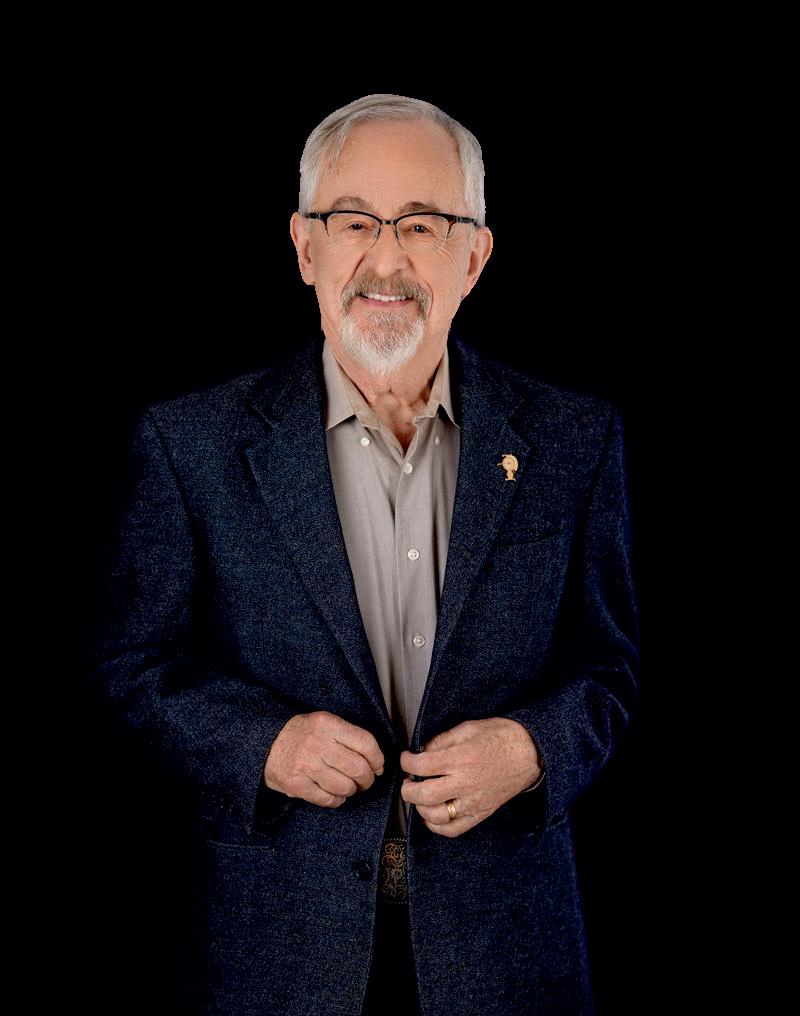

graduatestudentswhowouldgoontomaketheirownmarks in academia, government, and industry. Perhaps one of his most notable roles was as principal investigator of the MIT BLOSSOMSInitiative—aprojectdedicatedtobringinghighquality STEM education to underserved schools around the worldviavideolessons.
Dr. Larson’s scholarly output is impressive: he is the coauthor or editor of six books and has written over 175 scientificpapers.Hisresearchspanstopicsasdiverseasurban policing,queuingtheory,smartenergyhomes,andpandemic modeling Notably, his work on vaccine distribution strategies during the H1N1 crisis—done with student Anna Teytelman—won him the “Best Paper of theYear” award in 2012fromValueinHealth.
In 2015, his work earned him the prestigious Lawrence M. KleinAward from the U.S. Department of Labor His paper "STEM Crisis or STEM Surplus?" written with Yi Xue, sparked national conversation and was featured in The New York Times His contributions consistently demonstrate the real-world relevance of academic research when driven by curiosity,rigor,andcompassion.
VisionaryLeadership:EducatingFutureCitizens
ProfessorLarsondefinesavisionaryleaderassomeonewho teachesnotjustsubjectsbutmindsets.Forhim,trueeducation cultivates inquisitive, ethical, and responsible citizens. He encourages students to ask hard questions, challenge the statusquo,andresistfollowingthecrowdblindly.Visionary leaders, he says, often tread risky but meaningful paths that otherslaterfollow
This commitment to nurturing independent thinkers makes his teaching approach profoundly impactful. It isn’t about creatingfollowers—it’saboutbuildingleaders.
Legacy:AMentor,NotJustaProfessor
Richard Larson hopes to be remembered not merely for his academic accomplishments but for his relationships with students and colleagues. His joy comes not from accolades, but from knowing that his students have gone on to achieve great things in academia, policy, and the private sector. To him,thesesuccessesrepresenttherippleeffectofmentorship.
HeseeshimselfassomeonewhohelpedredefineOperations Research,contributedtoeducationreform,and—most

“Dr. Larson’s early work “Urban Police Patrol Analysis” (1972) earned him the prestigious Lanchester Award.”



importantly—addedvaluetoeveryinstitutionandindividual heengagedwith.
AwardsandRecognition:ACareerofImpact
Dr Larson’s early work “Urban Police Patrol Analysis” (1972) earned him the prestigious Lanchester Award. Over the years, he has received multiple best-paper awards for tackling issues of national importance from pandemic response to STEM workforce trends. These accolades underscoreacareermarkednotonlybyacademicexcellence butbysocietalimpact.
Teaching Methods: Constant Engagement, Eternal Curiosity
Despite the changing landscape of education, Larson has never compromised on the core of his teaching philosophy: engagement. Whether teaching in person or through digital platforms, he believes that education must always stimulate curiosityandfosterdialogue.Forhim,everylectureisatwowayconversation.
Whether it's helping a struggling student become a top performer or making abstract math relatable through realworld scenarios, his ability to connect knowledge with applicationremainstimeless.

“Professor Richard Larson’s career offers a powerful lesson in the value of passion, perseverance, and purpose.”

AJourneyofPurposeandPossibility
ProfessorRichardLarson’scareeroffersapowerfullessonin the value of passion, perseverance, and purpose. In a world often obsessed with short-term gains, he reminds us that the truemeasureofsuccessliesintheliveswetouchandtheideas weinspire.
Throughresearch,mentorship,andleadership,hehashelped redefine what it means to be an educator in the 21st century. He is not just a professor, writer, or researcher—he is a changemaker,avisionary,andaboveall,alifelongstudentof thehumanpotential.
As the world continues to evolve, the legacy of Richard Larsonwillremainetchedintheheartsandmindsofthosehe taught, mentored, and inspired. In doing so, he has not only shapedthefutureofeducationbuthasalsoremindeduswhy learning—and those who enable it—remain the cornerstone ofallprogress.




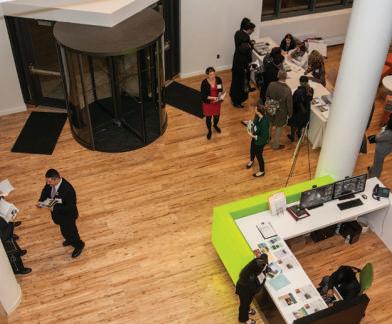


Owing to this rapidly evolving age of learning and education,employees'workplacelearning,anddigital learning solutions, knowledge acquisition, retention, and application by individuals and organizations are being transformed.BreakthroughStrategiesarenotpushingtheoldto give space to the new but the winning value in learning from simplicity of access, customization, and scalability of digital solutions. With changing worker needs with contemporary workforce,thesetechnologiesmustbeembracedinordertostay competitive and alert. Digital learning solutions provide a toolkit of tools, platforms, and approaches like eLearning modules, mobile applications, AI-delivered personalized content, and virtual classrooms. These technologies provide unparalleled flexibility as learners learn at their own pace, on their schedule, and from highly dispersed locations. With omnipresence of connectivity and smart devices everywhere around the globe, online learning is no longer a choice but the defaulteducationalmodeinschoolsaswellascorporatesectors too.
The greatest advantage of technology for learning digitally perhapsisthattheycanofferveryhighdegreesofpersonalized learningthatarespecificallysuitedtoeveryandanyindividual's own particular need. Traditional classroom learning is a onesize-fits-allsystemwhichcanhaveadetrimentaleffectonhigh andlowachievers.Web-basedlearningprograms,ontheother hand, use sophisticated data analysis and artificial intelligence toself-adjustreal-timedependingonlearningstyle,speed,and aptitude for all grade levels and subjects. From interactive quizzestoartificial-intelligence-basedfeedback,thesewebsites allow students to focus on their own weaker spots while optimizingtheirstrongerareas.
Adaptive learning systems also have an interactive cycle of feedbackfromthestudentandthesystememphasizingastrong effectonengagement,motivation,andretention.


Through revealing student activity like time spent on a module, incorrect answers, or favored types like video and text,thesystemadjustsbychangingthepresentationoffuture material in an appropriate manner Not only does this individualizationimprovelearningattainment,butitfostersa moreopenandinclusiveenvironmentinwhichtolearnwhere allindividuals'individualneedsaremet.
Computerlearningisalsotransformingbusinesstrainingand professional education in every business and industry size. Increasing numbers of companies are investing in Learning Management Systems (LMS) and cloud-based training softwareinordertotraintheiremployeescost-effectivelyand effectively. This shift is necessitated by the need to respond promptly to evolving industries, adopt novel technologies, andremaincompetitivelyaheadofthemarketinacontinually evolving market With instantaneous access to training material and certification programs, employees can acquire knowledge and enhance themselves without disrupting normal working hours or productivity Additionally, the websites usually provide sophisticated measurement of performance rooms that help in tracking progress during practice, identifying areas of weakness, and adjusting upcoming training. Online learning is an unprecedented optionoflifelonglearningandcontinuousself-improvement fortheindividual.
By attending courses like Coursera, LinkedIn Learning, and Udemy, workers can acquire new skills, switch careers, or explore new hobbies, typically a fraction of the expense of conventional schooling. Self-directed learning methodologies yield to self-control over one's own change, providing access to learning and its inherent re-focusing in one's own profession. In the fast globalizing economy in whichthehalf-lifeofskillsisdecreasingvirtuallyinrealtime, it is just that adaptability and openness become essential in order to be relevant, responsive, and resilient in the face of fast-changinglabormarkets.
With digital technology unfolding at an exponentially increasing pace, boundaries between new and old dissolve, and hybrid forms emerge integrating the best of each. Joint learning spaces where digital content, interactive applications,andlivecollaborativetoolsaugmentinstruction in classrooms are increasingly being embraced by schools, universities, and organizations. Not only is this approach
maximizing the best use of available resources but also equipping teachers and trainers to offer more effective and targetedsupporttoclassrooms.
The future of teaching lies on this hybrid model that uses technologyasaninevitablesupplementandnotanalternative totraditionalteaching.Teachersandeducatorsaregivendatadriveninformationinordertobetterplanlessons,accurately measurelearning,andinterveneatthepropertime.However, studentsaretreatedtofreedomandexposuretovariousforms such as video lectures, simulations, virtual labs, and gamification The integration of digital technology into current systems is a leap to more adaptive, inclusive, and future-orientedlearningforall.
Astheworldeconomyisbecomingincreasinglyknowledgebased, there has never been greater demand for scalable, effective, and agile solutions to learning. E-learning is a powerfulweapontorespondtothisneed,makingitpossible for individuals and institutions to be masters of the complexities of the future with confidence Through personalization, responsiveness to lifelong learning, and blended models, digital learning solutions are not only redesigning learning, but also reshaping the purpose and process of education. Those organizations and institutions willing to undertake those types of changes will not only be improving the learning outcomes, but also adopting an organizational culture of perpetual change, innovation, and adaptability.Intheyearstocome,applicationoftechnologyin education is no longer a choice; it is a prerequisite for competitiveness in an interdependent world and an ongoing changingprocess.






Education has always been the cornerstone of human progress, shaping societies, economies, and individual lives. In today’s digital era, the rapid integration of technology into classrooms has not only redefined how students learn but also how educators teach. Educational Technology, or EdTech, has emerged as a powerfulenablerofpersonalized,inclusive,andfuture-ready education.Itgoesfarbeyonddigitizingtextbooksoroffering online classes. EdTech is about creating transformative experiences that make learning more engaging, accessible, and aligned with the skills needed in a rapidly changing world.TheimportanceofEdTechinnovationliesinitsability toaddresstheevolvingdemandsofeducation.Withstudents now expected to thrive in global, technology-driven economies, traditional approaches are no longer sufficient. The future of learning requires tools and methods that are adaptable, interactive, and deeply relevant. By combining technologywithpedagogicalexpertise,EdTechbridgesgaps inaccessibility,enhancesengagement,andprepareslearners forthechallengesandopportunitiesoftomorrow
DrivingAccessibilityandInclusivityinEducation
One of the greatest strengths of EdTech innovation is its ability to make education more accessible and inclusive. In manypartsoftheworld,studentsstillfacebarrierstoquality education due to geography, socio-economic conditions, or limited infrastructure Digital tools and platforms help overcome these challenges by bringing classrooms to students regardless of their location. From online courses to mobile learning applications, technology ensures that education is no longer restricted to physical spaces. It empowers rural learners, working professionals, and individuals with disabilities to access knowledge that was previouslyoutofreach.
Inclusivityisanothercriticalaspect.EdTechsolutionscanbe tailored to meet diverse learning needs, offering support for students who require additional resources or adaptive tools. Speech-to-textfeatures,interactivesimulations,andgamified modulescatertodifferentlearningstylesandabilities.Inthis way, technology promotes equity in education by ensuring
thatnolearnerisleftbehind.TheabilityofEdTechtobridge privilege and poverty, while creating pathways to opportunity,iscentraltoitsroleinfuturelearning.
Traditional methods of teaching often struggle to maintain student engagement, particularly in large classrooms where individual needs may be overlooked. EdTech innovation transforms this dynamic by making learning interactive and personalized Through tools such as adaptive learning platforms, artificial intelligence, and data-driven insights, educators can better understand how each student learns. These technologies allow instruction to be customized to pace, style, and interest, thereby improving comprehension and retention. For instance, a student struggling with mathematics can receive additional practice modules, while anotherexcellinginsciencecanexploreadvancedconceptsat theirownpace.
Gamification and immersive technologies further enhance engagement.Virtualreality(VR)andaugmentedreality(AR) enable learners to experience concepts in vivid, practical contexts.Insteadofpassivelyreadingabouthistoricalevents, students can explore virtual reenactments. Instead of imaginingchemicalreactions,theycanconductexperiments in simulated labs. These tools do not replace traditional learningbutenrichit,makingeducationbothmeaningfuland memorable By connecting knowledge to real-world applications, EdTech motivates learners and nurtures curiosity,ensuringthateducationbecomesalifelongpursuit ratherthanatemporaryphase.
The future workforce requires skills that extend far beyond academic knowledge. Critical thinking, problem-solving, collaboration,anddigitalliteracyarenowessentialinalmost every profession. EdTech innovation plays a pivotal role in cultivatingthesecompetenciesbyaligningeducationwiththe realities of a rapidly evolving job market. Project-based learning platforms encourage collaboration across geographies, exposing students to diverse perspectives Codingplatforms,roboticskits,andonlinedesigntoolsfoster creativity and innovation from an early age. In this way, learners are equipped not only with knowledge but with the abilitytoapplyiteffectivelyinreal-worldcontexts.
Moreover, the integration of EdTech ensures that students developcomfortandfluencywithdigitaltools.Asworkplaces adopt artificial intelligence, automation, and advanced data
systems, the ability to navigate and adapt to technology will beindispensable.Byembeddingtechnologyintothelearning journey,educationpreparesstudentsforcareersthatmaynot even exist yet. This forward-looking approach ensures that learners are resilient, adaptable, and capable of contributing meaningfullytosociety TheimportanceofEdTechliesinits power to future-proof education, ensuring that both individuals and nations remain competitive in a globalized world.
EdTechinnovationisnotsimplyatrendbutanecessityforthe evolution of education. It addresses the pressing need for accessibility, fosters inclusivity, and ensures that education reacheslearnerswherevertheyare.Ittransformsthelearning experience by enhancing engagement and personalization, ensuring that students remain motivated and connected to their studies. Most importantly, it prepares learners for the demands of a technology-driven future by equipping them withtheskillsandconfidenceneededtosucceed.Associeties continue to adapt to rapid technological and economic changes,theroleofEdTechwillonlygrowmorecritical.The educators, policymakers,and innovators who embracethese advancements are not only shaping classrooms but also shapingthefutureofnations.Byreimagininghowknowledge is delivered and experienced, EdTech has the potential to createempoweredcitizens,resilientcommunities,andamore equitableworld.















